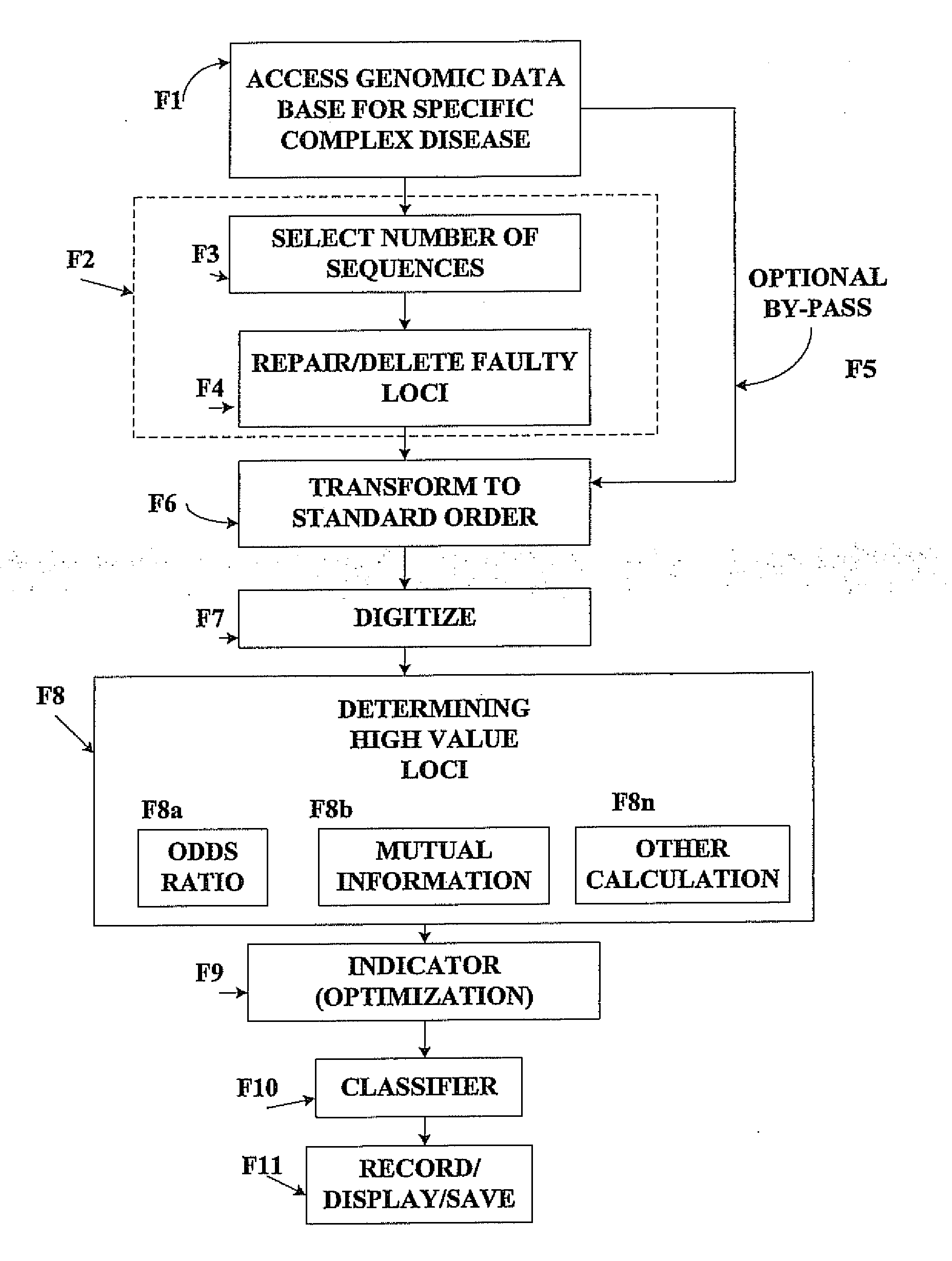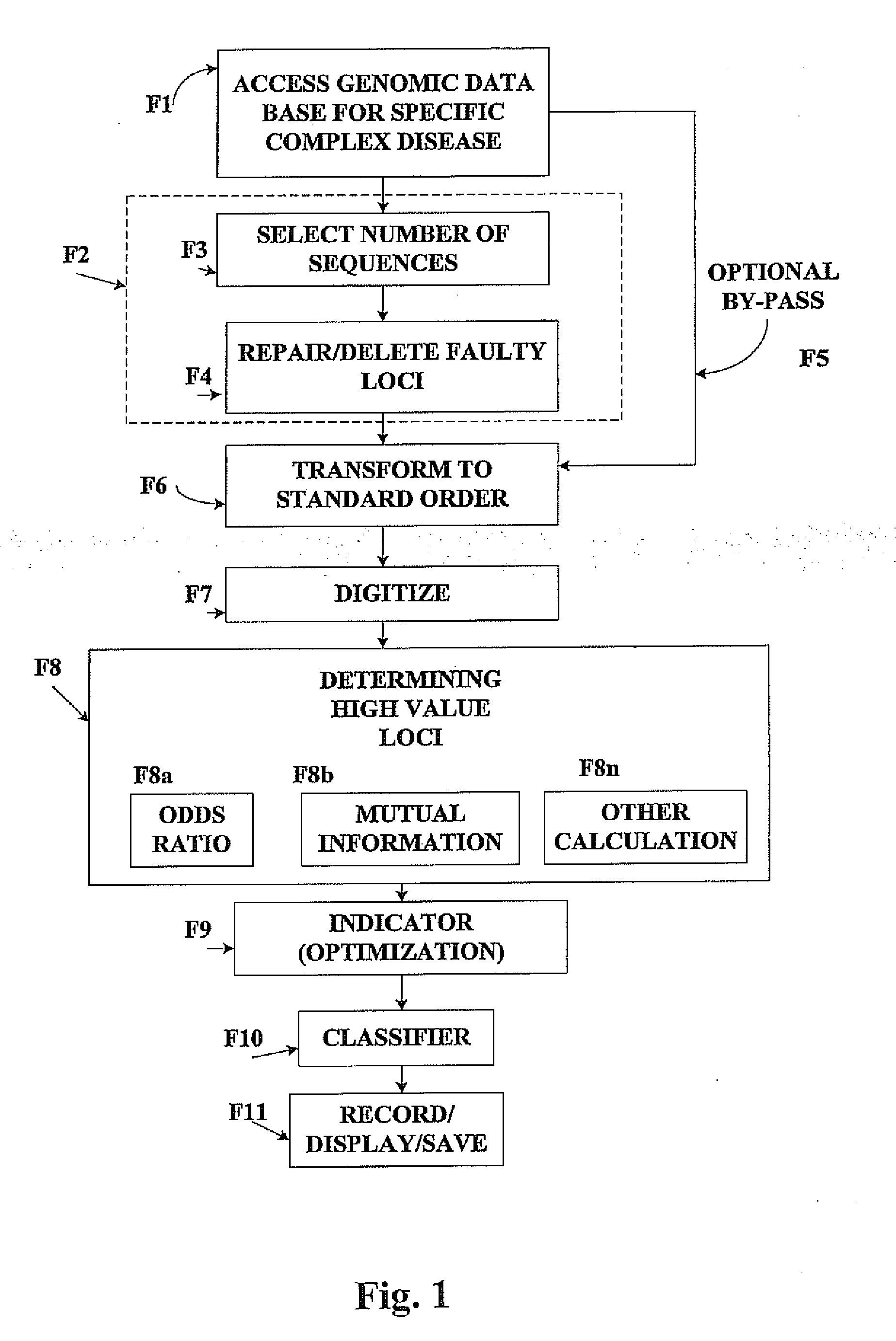Method for identifying and employing high risk genomic markers for the prediction of specific diseases
a genomic marker and high-risk technology, applied in the field of dna genotypic data, can solve the problems of lack of dna variant linkages to human diseases particularly, and achieve the effect of facilitating the classification of disease risk genetic markers
- Summary
- Abstract
- Description
- Claims
- Application Information
AI Technical Summary
Benefits of technology
Problems solved by technology
Method used
Image
Examples
an example
[0059]Allele 347351 is the odd locus of rs2237892, and is a SNP that has been associated in the literature with T2D. For this locus Qd=0.108 and Qc=0.084, and therefore the odds ratio lies in the steep climb at the left of FIG. 3; the SNP odds ratio Ω=1.32. Based on roughly 1000 sequences the control distribution has a standard deviation σ=0.009 and Qd is almost 3 standard deviations from Qc, and in the usual manner leads to a significant p-value.
[0060]On the basis that Qd / Qc=1.28 it has been said in the literature that if the rarer symbol is found then it is 28% more likely that it signifies T2D rather than normalcy. However the odds that this symbol will be found is only about 1 in 10 and so this is really a poor predictor of T2D, which is the reason that indicator analysis eliminates this as a candidate locus. By comparison, the top entry in Table 1 states that its symbol will be found roughly 1 in 6 times and if found signifies that it is 68% more likely to signify T2D. As such ...
PUM
 Login to View More
Login to View More Abstract
Description
Claims
Application Information
 Login to View More
Login to View More - R&D
- Intellectual Property
- Life Sciences
- Materials
- Tech Scout
- Unparalleled Data Quality
- Higher Quality Content
- 60% Fewer Hallucinations
Browse by: Latest US Patents, China's latest patents, Technical Efficacy Thesaurus, Application Domain, Technology Topic, Popular Technical Reports.
© 2025 PatSnap. All rights reserved.Legal|Privacy policy|Modern Slavery Act Transparency Statement|Sitemap|About US| Contact US: help@patsnap.com



